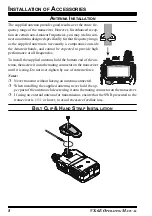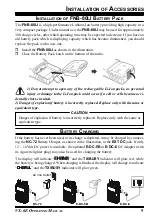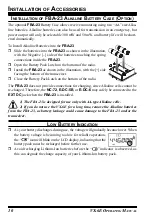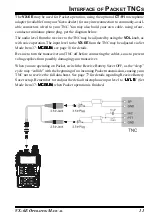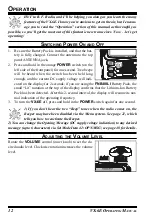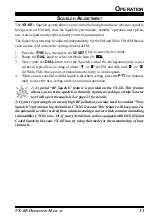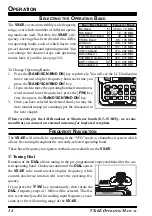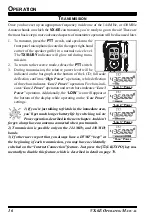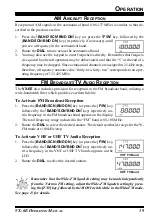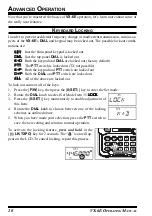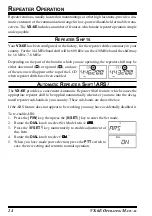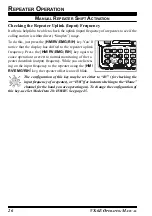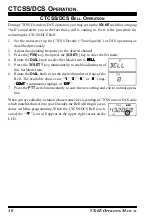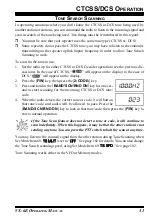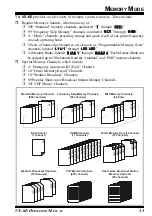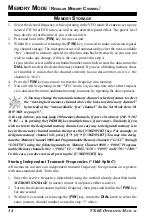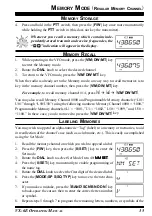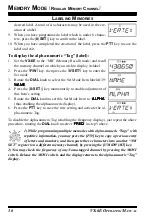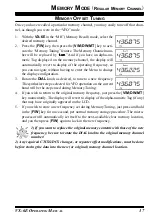
VX-6E O
PERATING
M
ANUAL
22
C
HANGING
THE
C
HANNEL
S
TEPS
The
VX-6E
’s synthesizer provides the option of utilizing channel steps of 5/10/12.5/15/
20/25/50/100 kHz per step, as well as an automatic step selection based on the current
operating frequency (“AUTO”), any number of which may be important to your operating
requirements. The
VX-6E
is set up at the factory in the “AUTO” configuration, which
probably is satisfactory for most operation. However, if you need to change the channel
step increments, the procedure to do so is very easy.
1. Press the [
F/W
] key, then press the [
1
(
STEP
)] key. This pro-
vides a “Short-cut” to Set Mode Item 61:
STEP
STEP
STEP
STEP
STEP
.
2. Rotate the
DIAL
to select the new channel step size.
3. Press the
PTT
key to save the new setting and exit to normal operation.
1) 9 kHz steps are available only when receiving on the BC band.
2) While operating on the BC band, you may only select channel steps of 9
kHz or 10 kHz; the other step selections are disabled.
3) 5 kHz and 15 kHz steps are not available for use on 250 - 300 MHz, nor above 580
MHz.
C
HANGING
THE
R
ECEIVING
M
ODE
The
VX-6E
provides for automatic receiving mode chang-
ing when the radio is tuned to different operating frequen-
cies. However, should an unusual receiving situation arise
in which you need to change other receiving mode, just
press the [
MODE
(
SP S
)
SQ TYP
] key. The receiving
modes available are:
AUTO
AUTO
AUTO
AUTO
AUTO
: Automatic mode setting per default values for
the selected frequency range.
FM
FM
FM
FM
FM
:
Frequency Modulation for receiving an Amateur Radio Station and most VHF/
UHF Communication.
WFM
WFM
WFM
WFM
WFM
: Frequency Modulation for receiving an FM Broadcast Station.
AM
AM
AM
AM
AM
:
Amplitude Modulation for receiving a Short-wave Broadcast Station and Air
Band Communication.
Unless you have a compelling reason to do so, leave the Automatic Mode
Selection feature on so as to save time and trouble when changing bands. If
you make a mode change for a particular channel or station, you can always
store that one channel into memory, as the mode setting will be memorized along with
the frequency information.
A
DVANCED
O
PERATION

